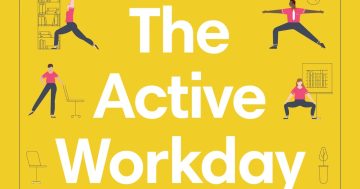Michelle Bakjac* says the pandemic marathon has dulled motivation and focus, spurning a hitherto neglected form of mental ill health called languishing.
 That ‘blah’ you’re feeling — it’s called languishing.
That ‘blah’ you’re feeling — it’s called languishing.
The neglected middle child of mental health can dull your motivation and focus, and for many reasons, it seems to be the dominant emotion of 2021.
At first, you may not recognise the symptoms that we all seem to have in common.
Friends mention they are having trouble concentrating. Colleagues report that even with vaccines here, they are not that excited about 2021.
It isn’t burnout — we still have energy. It isn’t depression — we don’t feel hopeless.
We just feel somewhat joyless and aimless. It turns out there’s a name for it —languishing.
Languishing is a sense of stagnation and emptiness. It feels as if you’re muddling through your days, looking at your life through a foggy windshield.
It might be the dominant emotion of 2021.
As scientists and physicians work to treat and cure the physical symptoms of long-haul COVID-19, many people are struggling with the emotional long-haul of the pandemic.
In the early, uncertain days it’s likely that your brain’s threat detection system, called the amygdala, was on high alert for fight-or-flight.
You probably developed routines that eased your sense of dread, but the pandemic has dragged on. Anguish has given way to languish.
Languishing is the neglected middle child of mental health. It’s the void between depression and flourishing — the absence of wellbeing.
You don’t have symptoms of mental illness, but you’re not the picture of mental health either.
Languishing dulls your motivation, disrupts your ability to focus, and triples the odds that you’ll cut back on work.
The term was coined by a sociologist named Corey Keyes, who was struck that many people who weren’t depressed also weren’t thriving.
His research suggests that the people most likely to experience major depression and anxiety disorders in the next decade aren’t the ones with those symptoms today.
They’re the people who are languishing right now.
Part of the danger is that when you’re languishing, you might not notice the dulling of delight or the dwindling of drive.
You don’t catch yourself slipping slowly into solitude; you’re indifferent to your indifference.
Even if you’re not languishing, you probably know people who are. Understanding it better can help you help them.
We still have a lot to learn about what causes languishing and how to cure it, but naming it might be a first step.
It could help to defog our vision, giving us a clearer window into what had been a blurry experience.
It could give us a socially acceptable response to: “How are you?”
Imagine if we answered: “Honestly, I’m languishing.” It would be a refreshing foil for toxic positivity — that quintessentially Aussie pressure to be upbeat at all times.
When you add languishing to your lexicon, you start to notice it all around you.
It shows up when you feel let down by your short afternoon walk. It’s in your kids’ voices when you ask how school went.
So, what can we do about it? A concept called ‘flow’ may be an antidote to languishing.
Flow is that elusive state of absorption in a meaningful challenge or a momentary bond where your sense of time, place and self melts away.
During the early days of the pandemic, the best predictor of wellbeing wasn’t optimism or mindfulness, it was flow.
People who became more immersed in their projects managed to avoid languishing and maintained their pre-pandemic happiness.
Could an early-morning word game catapult you into flow?
A late-night Netflix binge sometimes does the trick too — it transports you into a story where you feel attached to the characters and concerned for their welfare.
While finding new challenges, enjoyable experiences and meaningful work are all possible remedies to languishing, it’s hard to find flow when you can’t focus.
In the past year, many of us also have been struggling with interruptions from kids around the house, colleagues around the world, and bosses around the clock.
Fragmented attention is an enemy of engagement and excellence, so give yourself some uninterrupted time
That means we need to set boundaries. Years ago, a Fortune 500 software company in India tested a simple policy: No interruptions Tuesday, Thursday and Friday before noon.
When the company set quiet time as official policy, 65 per cent of employee achieved above-average productivity.
I don’t think there’s anything magical about Tuesday, Thursday and Friday before noon.
The lesson of this simple idea is to treat uninterrupted blocks of time as treasures to guard. It clears out constant distractions and gives us the freedom to focus.
One of the clearest paths to flow is a just-manageable difficulty: A challenge that stretches your skills and heightens your resolve.
That means carving out daily time to focus on a challenge that matters to you — an interesting project, a worthwhile goal, or a meaningful conversation.
Sometimes it’s a small step toward rediscovering some of the energy and enthusiasm that you’ve missed during all these months.
Languishing is not merely in our heads, it’s in our circumstances.
We still live in a world that normalises physical health challenges but stigmatises mental health challenges.
As we head into a new post-pandemic reality, it’s time to rethink our understanding of mental health and wellbeing.
“Not depressed” doesn’t mean you’re not struggling; “not burned-out” doesn’t mean you’re fired up.
By acknowledging that so many of us are languishing, we can start giving voice to quiet despair and lighting a path out of the void.
*Michelle Bakjac is an experienced Adelaide-based psychologist, organisational consultant, coach, speaker and facilitator and a Director of Bakjac Consulting. She can be contacted at [email protected].
This article first appeared at bakjacconsulting.com.











